When it comes to achieving a cohesive and visually appealing home exterior, every architectural element plays a vital role. One significant aspect that often receives less attention is the garage door. A well-chosen garage door can enhance the architectural style of your home, overall value, and curb appeal. In this article, we will explore the key factors that contribute to architectural compatibility and help you select a garage door that seamlessly integrates with your home’s design.
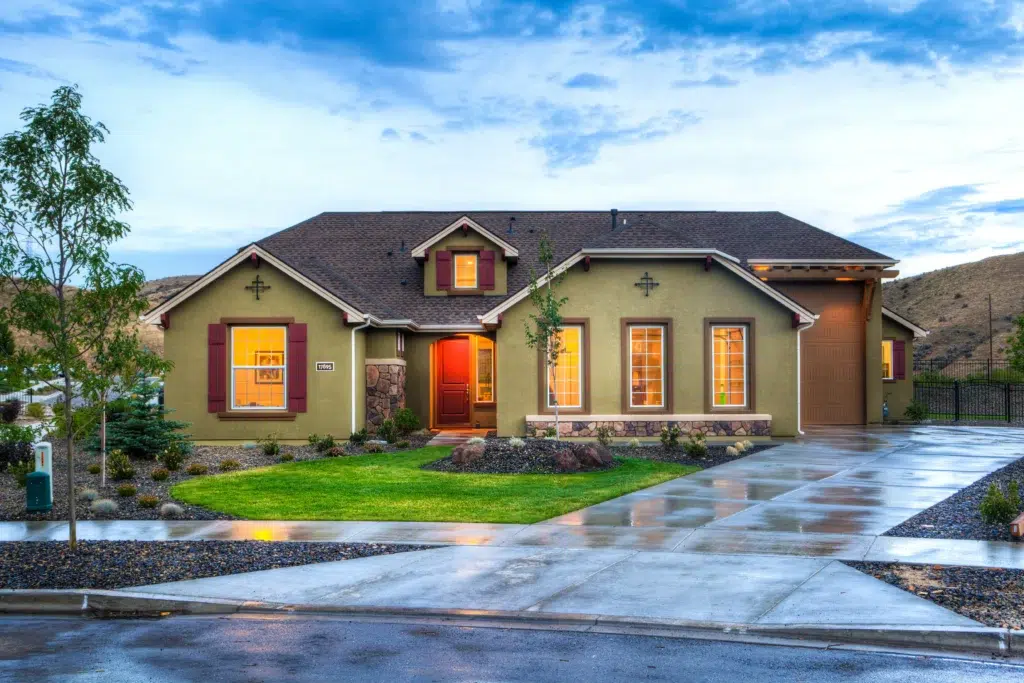
What is Architectural Compatibility?
Architectural compatibility refers to the harmonious blending of various design elements to create a unified and visually pleasing whole. When selecting a garage door, it’s important to consider how it complements the architectural style of your home, ensuring a seamless integration that enhances the overall curb appeal. Some examples of architectural compatibility, that are not necessarily tied to garage doors include the following:
Roof Style and Exterior Materials
A home with a steeply pitched roof and natural slate tiles can be architecturally compatible with exterior materials such as stone or brick. The textures and colors of these materials create a cohesive look, emphasizing the traditional or rustic architectural style.
Proportions and Scale
A two-story home with tall and narrow windows can maintain architectural compatibility by using vertical siding or exterior cladding. This choice emphasizes the height of the home and enhances its overall proportions.
Symmetry and Balance
Symmetrical home design, such as a Georgian or Colonial style, can exhibit architectural compatibility by having evenly spaced windows and a central entrance door with matching sidelights and transom windows. This creates a sense of balance and harmony in the overall composition.
Window Styles and Trim Details
A home with large, arched windows and ornate trim details can have architectural compatibility with a grand entrance door featuring similar arches and decorative moldings. This consistency in design elements creates a unified and visually appealing facade.
Material Contrast
A contemporary home with a sleek design and smooth surfaces can achieve architectural compatibility by incorporating contrasting materials. For example, using a combination of wood and glass in the exterior facade creates an interesting visual contrast while maintaining a cohesive and modern look.
Historical References
An architecturally compatible design can be achieved by referencing historical architectural styles. For instance, a Victorian-inspired home with intricate woodwork and decorative trim can feature a wrap-around porch with ornate columns, creating a consistent and period-appropriate design.
Analyze Your Home’s Elements
Take a close look at the existing design elements of your home’s exterior. Examine the materials used, such as brick, stone, siding, or stucco. Pay attention to the colors, textures, and finishes present in your home. Observe the architectural details, such as trim work, decorative accents, window styles, and proportions. Here are some elements to note when accessing your home:
Materials
If your home’s exterior is predominantly made of brick, you can consider architectural compatibility by incorporating brick accents or using complementary materials like stone or stucco for additional texture and visual interest. This ensures a cohesive look that ties the different elements together.
Textures
If your home features textured materials like stone or textured stucco, you can consider architectural compatibility by choosing elements that complement or enhance the texture. For instance, selecting a garage door with a subtle texture or a similar pattern can create a cohesive and visually pleasing look.
Trim Work
Observe the trim work on your home, such as crown moldings, window casings, or decorative accents. Consider selecting a garage door that incorporates similar trim details or complements the existing trim work to ensure architectural compatibility and a unified look.
Colors
If your home has a neutral color palette, such as shades of beige or gray, you can maintain architectural compatibility by selecting trim colors that harmonize with the main color. For example, a home with beige siding may have white or cream-colored trim to create a subtle contrast without clashing.
Finishes
If your home has a specific finish, such as a smooth or rough surface, it’s important to consider this when selecting other design elements. For example, if your home has a smooth stucco finish, choosing a garage door with a smooth or slightly textured surface can maintain architectural compatibility and consistency.
Window Styles
Take note of the window styles present on your home’s exterior. If your home has windows with divided panes or specific architectural details, you can choose a garage door with windows that reflect a similar style. This creates a harmonious connection between the different elements of your home.
Consider Proportions and Scale
When evaluating the proportions and scale of your home and surrounding structures, it’s important to consider how the size of your garage door fits into the overall aesthetic composition. Ensuring that the garage door is proportionate to the size of your home is crucial in maintaining architectural harmony. A garage door that is too large for the scale of your home can overpower the facade, appearing imposing and out of balance.
On the other hand, a garage door that is too small may seem insignificant and fail to make a visually appealing impact. Striving for proportionality ensures that the garage door integrates seamlessly with the rest of the architectural elements, creating a cohesive and pleasing appearance. By carefully assessing the size and scale of your home, you can select a garage door that complements its dimensions and contributes to the overall visual harmony of the property.
Common Examples of Architectural Styles
Traditional Home
For a traditional home with classic design elements, consider a garage door with raised panels and decorative windows. Choose a material that matches or complements the exterior of your home, such as wood or faux wood. Incorporate details like ornamental hardware and trim work to reflect the traditional style. Opt for colors that complement the existing color scheme of your home, such as neutral tones or traditional hues like white, beige, or black.
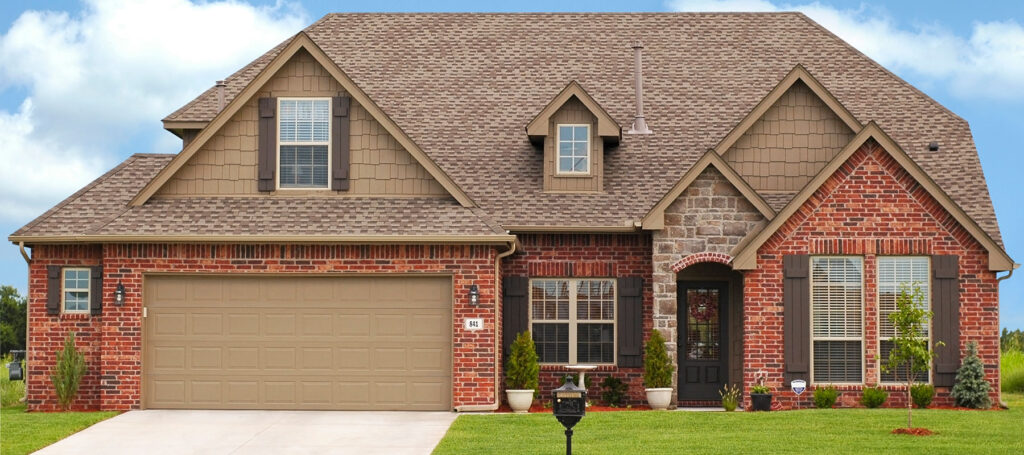
Modern Home
In the case of a modern home with clean lines and minimalistic aesthetics, a garage door with a sleek and minimalist design is ideal. Look for garage doors made of aluminum or steel with a smooth finish. Choose a design with flush panels or horizontal lines to complement the contemporary look. Consider a garage door with large, full-view windows to enhance the modern appeal and allow natural light into the garage. Opt for neutral colors or bold contrasting colors to make a statement.
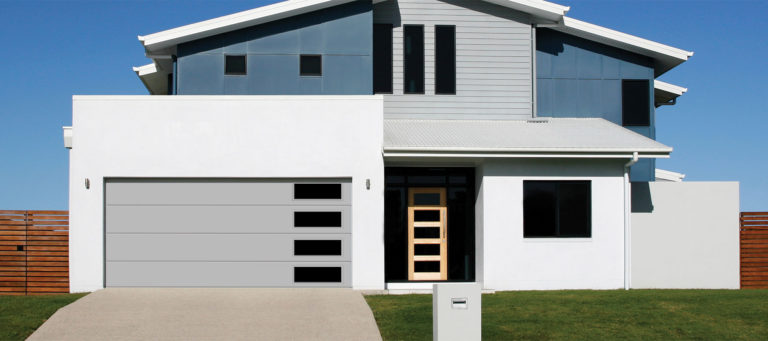
Craftsman Home
For a craftsman-style home characterized by natural materials and craftsmanship, select a garage door that reflects these features. Consider a wooden garage door with simple, horizontal paneling and decorative details like window grilles or hardware with a hammered metal finish. Emphasize warm and earthy tones in the wood stain or paint color to align with the craftsman aesthetic. Aim for a design that evokes a sense of handcrafted beauty and blends harmoniously with the home’s overall design.
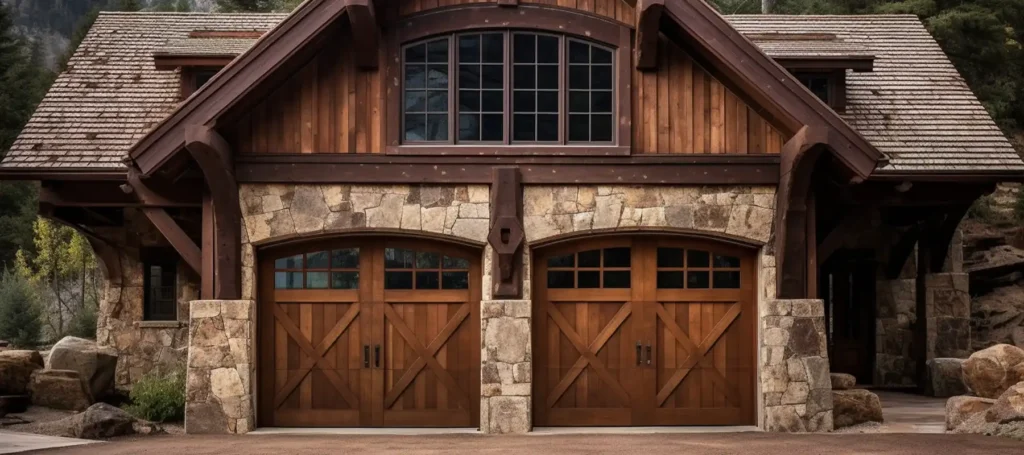
Colonial Style Home
A colonial-style home often features symmetrical design elements and a sense of elegance. To achieve architectural compatibility, choose a garage door with raised panels and traditional window styles, such as divided or mullioned windows. Consider materials like steel or wood that can be painted to match the exterior color scheme. Opt for colors that are classic and timeless, such as white, beige, or dark shades like navy blue or forest green.
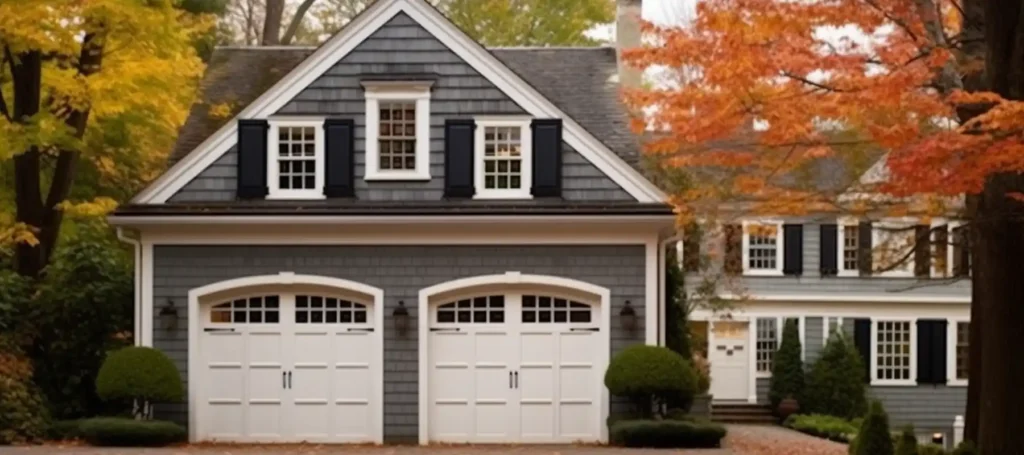
Consult Professionals
If you’re uncertain about architectural compatibility, consult professionals like Jim Beam’s Garage Doors. Our team can help you explore the different styles of garage doors available that match your home’s architectural style. The Jim Beam team can provide expert advice and recommendations based on your home’s architectural style, materials, and design elements.
If you don’t know already, Jim Beam’s Garage Doors is one of the top-rated garage door installers and repairers in the Northern Colorado area. With over 120+ reviews on Google and an average rating of 4.9 stars and top-rated status on HomeAdvisor, you can trust Jim Beam’s to do the job right the first time. Get a fast and free estimate on your garage repair, garage maintenance, or garage door installation today by contacting us!
Frequently Asked Questions
Architectural compatibility refers to the harmonious blending of the garage door’s design with your home’s architectural style, ensuring a cohesive and visually appealing exterior.
Consider your home’s roofing style, exterior materials, proportions, window styles, and color scheme. Select a garage door that mirrors these elements in design, material, and color to achieve a unified look.
A well-matched garage door enhances curb appeal, adds value to your property, and creates a visually pleasing appearance that reflects your home’s character and style.
For traditional homes, wood or faux wood garage doors with raised panels, decorative hardware, and classic colors like white, beige, or wood stains are ideal for complementing the architectural style.
Modern homes pair well with garage doors that have sleek, minimalist designs, such as those made of aluminum or steel with flush panels or large windows, in neutral or bold colors to accentuate the contemporary aesthetic.
Opt for a wooden garage door with horizontal paneling and decorative details like window grilles or hammered metal hardware, in warm, earthy tones to highlight the craftsmanship and natural materials characteristic of Craftsman homes.
Choose a garage door with symmetrical raised panels and traditional window styles, in classic and timeless colors like white, beige, or dark shades, to maintain the elegance and symmetry of Colonial architecture.
Consult with a reputable garage door provider like Jim Beam’s Garage Doors, where experts can offer tailored advice, showcase a range of options that suit different architectural styles, and provide installation services to enhance your home’s curb appeal and functionality.











